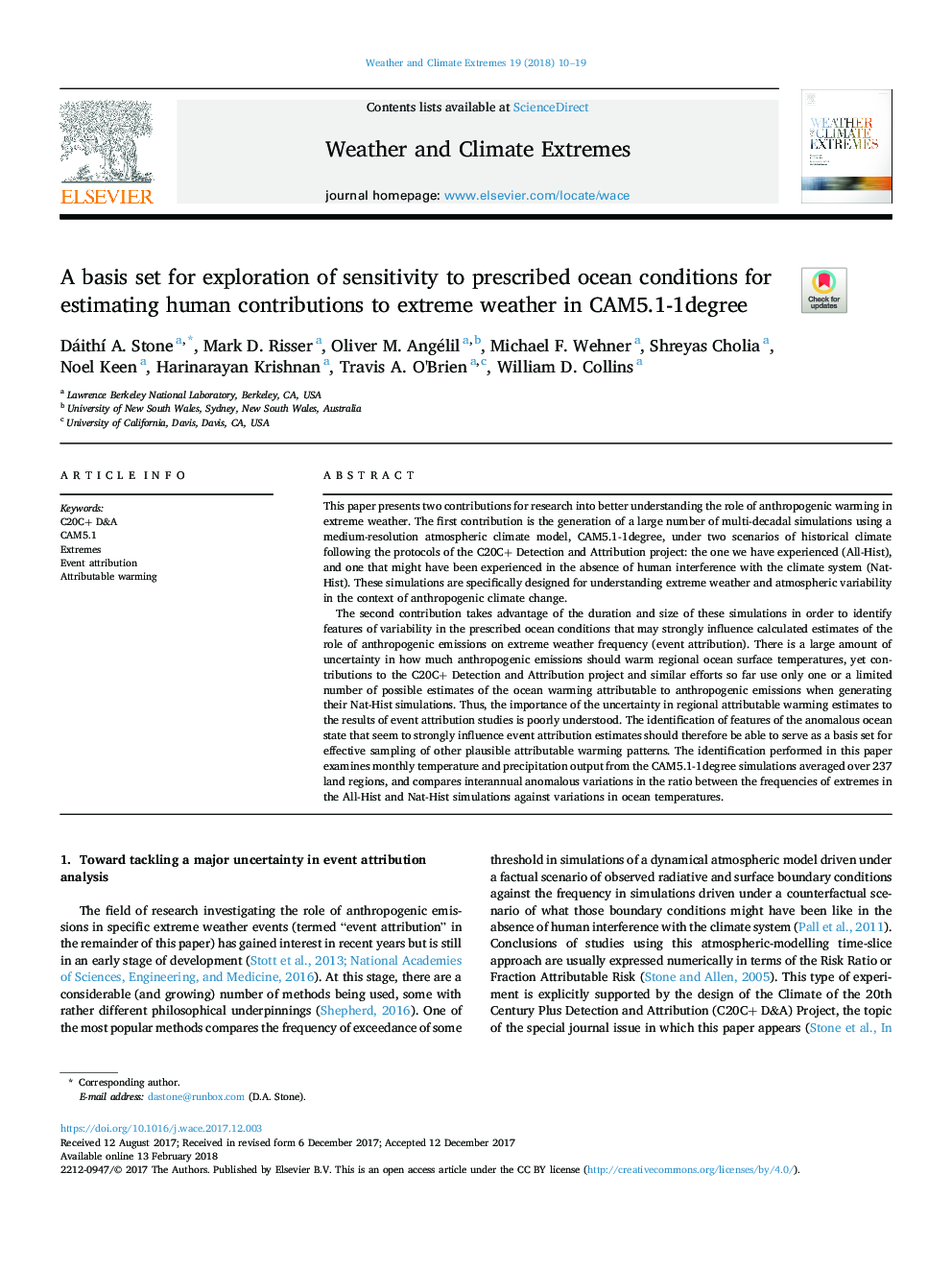| Article ID | Journal | Published Year | Pages | File Type |
|---|---|---|---|---|
| 7501233 | Weather and Climate Extremes | 2018 | 10 Pages |
Abstract
The second contribution takes advantage of the duration and size of these simulations in order to identify features of variability in the prescribed ocean conditions that may strongly influence calculated estimates of the role of anthropogenic emissions on extreme weather frequency (event attribution). There is a large amount of uncertainty in how much anthropogenic emissions should warm regional ocean surface temperatures, yet contributions to the C20C+Â Detection and Attribution project and similar efforts so far use only one or a limited number of possible estimates of the ocean warming attributable to anthropogenic emissions when generating their Nat-Hist simulations. Thus, the importance of the uncertainty in regional attributable warming estimates to the results of event attribution studies is poorly understood. The identification of features of the anomalous ocean state that seem to strongly influence event attribution estimates should therefore be able to serve as a basis set for effective sampling of other plausible attributable warming patterns. The identification performed in this paper examines monthly temperature and precipitation output from the CAM5.1-1degree simulations averaged over 237 land regions, and compares interannual anomalous variations in the ratio between the frequencies of extremes in the All-Hist and Nat-Hist simulations against variations in ocean temperatures.
Keywords
Related Topics
Physical Sciences and Engineering
Earth and Planetary Sciences
Atmospheric Science
Authors
Dáithà A. Stone, Mark D. Risser, Oliver M. Angélil, Michael F. Wehner, Shreyas Cholia, Noel Keen, Harinarayan Krishnan, Travis A. O'Brien, William D. Collins,
